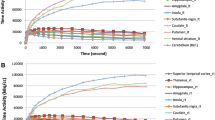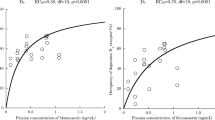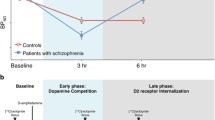Abstract
Rationale. Extrapyramidal symptoms (EPS) are common with conventional antipsychotics. Clozapine and other novel antipsychotic substances with lower in vitro affinity for dopamine-2 (D2) receptors have a lower propensity to induce EPS.
Objective. We investigated whether striatal D2 receptor occupancy predicted the occurrence of EPS with atypical antipsychotics and the typical neuroleptic haloperidol.
Methods. [123I]Iodobenzamide (IBZM) and single photon emission tomography (SPECT) were used to quantify receptor occupancy in 71 patients treated with antipsychotics. EPS were rated according to the Simpson-Angus scale (SAS). EPS were deemed clinically relevant, if the SAS score was ≥5 and/or anticholinergic medication was required. Patients received atypical antipsychotic monotherapy for at least 14 days with amisulpride (n=2), clozapine (n=6), haloperidol (n=10), olanzapine (n=6), quetiapine (n=4), risperidone (n=14), sertindole (n=13), or zotepine (n=16).
Results. The striatal D2 receptor occupancy ranged from <20% to almost saturation. The lowest occupancy was seen with quetiapine and clozapine, the highest with haloperidol. Twenty-two of 71 patients (29%) experienced clinically relevant EPS. These patients displayed significantly higher mean striatal D2 receptor occupancy (77%) than those without EPS (61%; P=0.002). We found a positive correlation between the percentage of striatal D2 receptor occupancy and the SAS score (r=0.28; P=0.02), despite 18 of these patients receiving anticholinergics, thus lowering their SAS score.
Conclusions. Striatal D2 receptor occupancy as measured with [123I]IBZM and SPECT predicted the occurrence of EPS in patients treated with atypical antipsychotics and haloperidol. In vivo imaging of brain receptors with SPECT may provide a useful clinical tool to titrate doses individually and avoid motor side effects in patients treated with novel antipsychotics.
Similar content being viewed by others
Author information
Authors and Affiliations
Additional information
Electronic Publication
Rights and permissions
About this article
Cite this article
Tauscher, J., Küfferle, B., Asenbaum, S. et al. Striatal dopamine-2 receptor occupancy as measured with [123I]iodobenzamide and SPECT predicted the occurrence of EPS in patients treated with atypical antipsychotics and haloperidol. Psychopharmacology 162, 42–49 (2002). https://doi.org/10.1007/s00213-002-1082-6
Received:
Accepted:
Published:
Issue Date:
DOI: https://doi.org/10.1007/s00213-002-1082-6




